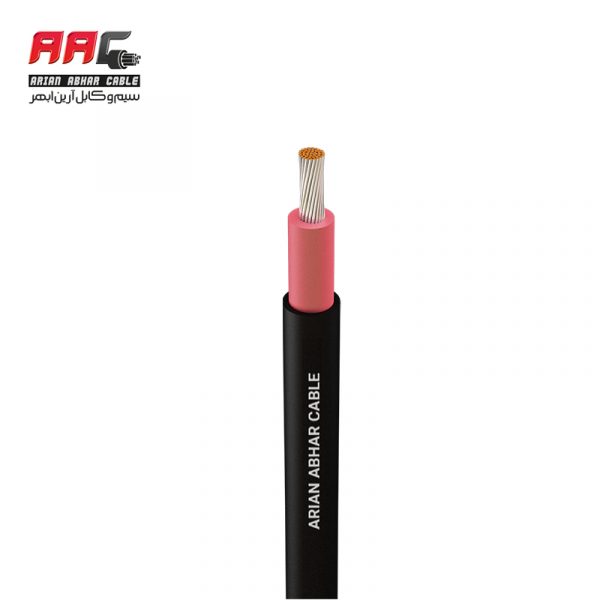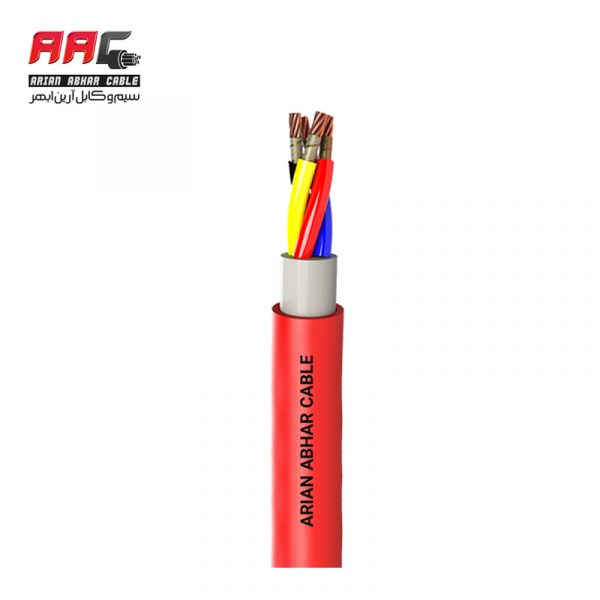In the discussion of industry and hardware, wire has a different meaning. Wired cable is a cable that is single-stranded, conductive and made of metal such as copper.
Dry wire is used in the wiring of billboards and electricity distributors, which passes the electric current. Fixed wire is inflexible and is used in pipes and under plaster. Wires can have a nominal voltage between 300 and 500 volts in sections of 0.5 and 0.75 and one square millimeter.
For wires that are more than one square millimeter, the rated voltage is 450 and 750 volts. Regarding wire size 1 (up to 3.57 mm), it should be said: the diameter of the single strand wire based on the size of the wire is from 1.13 mm meter (for size 10 wire) is variable, due to excessive dryness and lack of bending of the wire and other cases, this type of wire is usually not used for higher sections (cross-section area above 10 square millimeters).
Wire, which is also known as non-flexible wire, fixed installation wire, or dry wire, is mainly suitable for use in the internal wiring of electrical panels and distributors. Also, the use of wire inside pipes and It is allowed under the plaster. Of course, fixed installation wires with regular twisted conductors can be used as connections for control boards in the construction of wiring harnesses and industrial electronics.
Application of wire cable
Wires are divided into two groups based on nominal voltage:
Wires with a nominal voltage of 300/500 volts
Wire wires with a rated voltage of 450/750 volts
According to the requirements of the relevant national standard, the conductor of the wire must be class 1 (single-wire conductor) or class 2 (semi-dispersed conductor).
Types of wire
It is worth noting that there are different sections in the wire cable structure, such as the final coating, intermediate coating, separating coating, metal armor, protection, insulation and conductor. Based on this, materials that have the ability to transfer current and have high conductivity are known as conductors. Materials such as aluminum and copper can be mentioned among the best conductors. Another component of the wire cable is insulation, which prevents electric current from passing through it due to its zero conductivity.
What are the most important features of wire cable?
Spraying wires with a nominal voltage of 300-500 volts, which are used in the installation inside the pipe and the lower and upper parts of plaster and hose pipes.
Spray wires with a nominal voltage of 450-750 volts that can be used to protect lighting systems and dry environments.
Also, regarding this type of cable, it can be said that the conductors of Afshan cables must be class 5 or class 6 according to the standard requirements.
It can be said about the wire of all kinds of spraying wires:
The following can be mentioned among the differences between the Afshan cable and the wire cable:
One of the differences between the blown cable and the wire cable is the flexibility of these two cables. In Afshan conductor cable, due to its string structure, we have more flexibility than wire cable, which is the most important difference between these two wires and cables.
The second difference between wire and wire cable, the difference in ohmic resistance of these two wires and cables, pointed out that the ohmic resistance in the example of wire conductor cable is slightly higher than wire wire. These resistances are caused by the twisting of the strands and the length of the cables
Another difference between Afshan cable and wire cable is against corrosion, according to the performance of these two wires and cables, it should be said that wire cable is more resistant to corrosion.
According to the mentioned cases, the afshan and wire cables are also different from each other in their application. For example, the afshan cable can perform better for machines and steering boards due to its greater flexibility. But due to the lower resistance of wire cable, it is preferable to use this type of cable in larger sections.
The cost of the wire cable is lower than the splicing cable.
The use of wire cables reduces the probability of connection due to fewer strands and single-stranded conductor.
Fashan cables do not break due to their malleability.
The difference between cable and cable







No comment